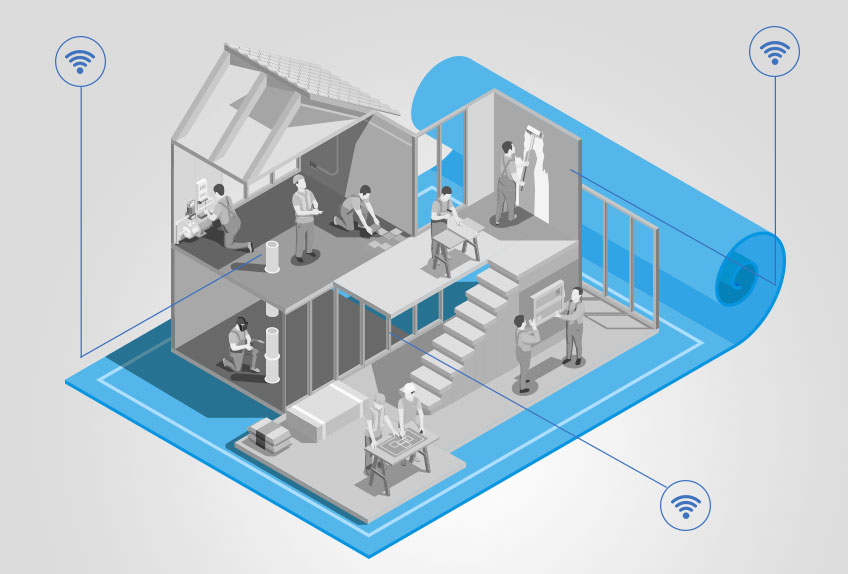As per a research done by the Pew Research Centre, 96% of Americans own a cellphone connection. In a nation almost entirely connected with wireless connectivity, staying connected is a necessity and not a choice. Cell phones today are beyond a communication tool and having a consistent mobile network is more important than ever. Dropped calls and continuous interruptions not only hinder communication but have tremendous impacts on business as well.
There are multiple reasons why one might witness low or interrupted cellular coverage; distance from the cell towers, natural terrain, vegetation, and atmospheric conditions are some of them. The main reason however for a low cellular signal is the materials used in making buildings. Be it at work or currently due to the pandemic at home we often race to open areas to take calls, because materials like bricks, steel, glass and concrete are notorious for blocking your cellular networks.
How do building materials affect cellular connectivity
Understanding how building materials affect cellular connectivity can go a long way in designing and operating efficient solutions for reducing losses and impact on business due to low signals inside workspaces. Cellular signals operate within -50 dBm (decibel milliwatts) to -120dBm, with -120 dBm meaning a dead zone or no cellular signal. What different building materials do is reduce the dB trying to enter the building and thus resulting in weaker connectivity.
Which building materials reduce maximum signal strength
While nature and atmospheric conditions such as forest covers, rains, mountains block -3 dB to -20dB and we cannot do much about it here are the top 5 building material and the quantum of signal strength they block while entering an office or home:
- Metals such as aluminium, copper, steel, iron etc are the biggest blockers to consistent cellular coverage. They block anywhere between -32 dB to -50 dB. Tinted and energy-efficient glasses which are great at keeping the heat from entering the buildings, also reflect back somewhere between -24 dB to -40 dB of cellular signals
- Concrete which is present in any modern building we see today blocks about -10 dB to -20 dB
- Bricks made from clay or cement depending on the thickness block cellular signals, reducing the signal strength by -8 dB to -28 dB
- Plaster often used as a decorative or a protective coating can block cellular signal up to -16 dB
Things get trickier with the size of the building of the facility and due to the numerous blocks, most spots within large buildings are in the complete dead zones.
Thankfully this can be addressed with properly designed cell signal boosters and antenna systems.
How can connectivity inside buildings be improved
Next time if your business is dealing with bad cellular reception, it might not be entirely your network service providers’ fault. Often depending on the size of the space and the materials used the cellular connectivity in the interior of the building can substantially be improved using an integrated system of the signal boosters and passive distributed antennas systems. These devices detect and capture any external signals on the outside of the buildings and then amplify that on the inside thus bringing better coverage and network strength.
Here’s where we come in. From choosing the right option, designing a network solution, procurement of technology and installation, we’re with you through the entire process. And we also offer post-installation services and maintenance to ensure your property is well connected within the local guidelines and jurisdictional regulations. So if you’re looking to improve cellular connectivity at your property, please contact us at sales@ktcoverage.com or visit www.ktcoverage.com to learn more about us.


